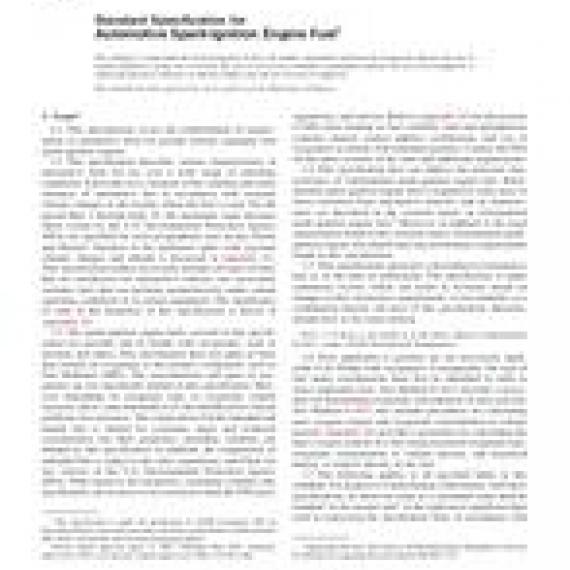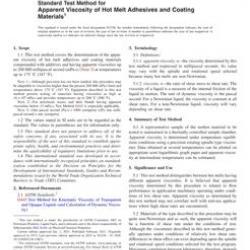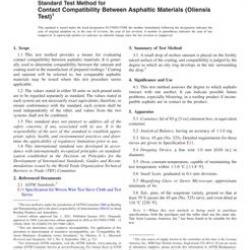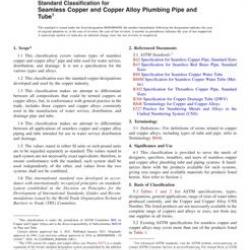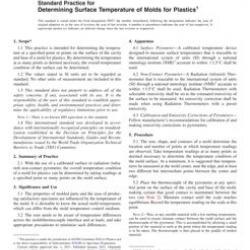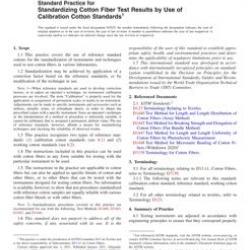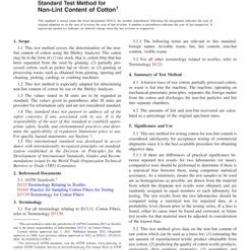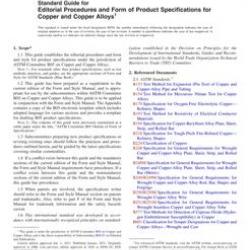No products
ASTM D4814-07
ASTM D4814-07 Standard Specification for Automotive Spark-Ignition Engine Fuel
standard by ASTM International, 04/15/2007
Full Description
1.1 This specification covers the establishment of requirements of automotive fuels for ground vehicles equipped with spark-ignition engines.
1.2 This specification describes various characteristics of automotive fuels for use over a wide range of operating conditions. It provides for a variation of the volatility and water tolerance of automotive fuel in accordance with seasonal climatic changes at the locality where the fuel is used. For the period May 1 through Sept. 15, the maximum vapor pressure limits issued by the U.S. Environmental Protection Agency (EPA) are specified for each geographical area except Alaska and Hawaii. Variation of the antiknock index with seasonal climatic changes and altitude is discussed in Appendix X1. This specification neither necessarily includes all types of fuels that are satisfactory for automotive vehicles, nor necessarily excludes fuels that can perform unsatisfactorily under certain operating conditions or in certain equipment. The significance of each of the properties of this specification is shown in Appendix X1.
1.3 The spark-ignition engine fuels covered in this specification are gasoline and its blends with oxygenates, such as alcohols and ethers. This specification does not apply to fuels that contain an oxygenate as the primary component, such as Fuel Methanol (M85). The concentrations and types of oxygenates are not specifically limited in this specification. However, depending on oxygenate type, as oxygenate content increases above some threshold level, the likelihood for vehicle problems also increases. The composition of both unleaded and leaded fuel is limited by economic, legal, and technical consideration, but their properties, including volatility, are defined by this specification. In addition, the composition of unleaded fuel is subject to the rules, regulations, and Clean Air Act waivers of the U.S. Environmental Protection Agency (EPA). With regard to fuel properties, including volatility, this specification can be more or less restrictive than the EPA rules, regulations, and waivers. Refer to Appendix X3 for discussions of EPA rules relating to fuel volatility, lead and phosphorous contents, deposit control additive certification, and use of oxygenates in blends with unleaded gasoline. Contact the EPA for the latest versions of the rules and additional requirements.
1.4 This specification does not address the emission characteristics of reformulated spark-ignition engine fuel. Reformulated spark-ignition engine fuel is required in some areas to lower emissions from automotive vehicles, and its characteristics are described in the research report on reformulated spark-ignition engine fuel. However, in addition to the legal requirements found in this research report, reformulated spark-ignition engine fuel should meet the performance requirements found in this specification.
1.5 This specification represents a description of automotive fuel as of the date of publication. The specification is under continuous review, which can result in revisions based on changes in fuel, automotive requirements, or test methods, or a combination thereof. All users of this specification, therefore, should refer to the latest edition.
Note 1 - If there is any doubt as to the latest edition of Specification D 4814, contact ASTM International Headquarters.
1.6 Tests applicable to gasoline are not necessarily applicable to its blends with oxygenates. Consequently, the type of fuel under consideration must first be identified in order to select applicable tests. Test Method D 4815 provides a procedure for determining oxygenate concentration in mass percent. Test Method D 4815 also includes procedures for calculating mass oxygen content and oxygenate concentration in volume percent. Appendix X4 provides a procedure for calculating the mass oxygen content of a fuel using measured oxygenate type, oxygenate concentration in volume percent, and measured density or relative density of the fuel.
1.7 The following applies to all specified limits in this standard: For purposes of determining conformance with these specifications, an observed value or a calculated value shall be rounded "to the nearest unit" in the right-most significant digit used in expressing the specification limit, in accordance with the rounding method of Practice E 29. The use of a trailing decimal point in a limit indicates that the digit preceding the decimal point is a significant digit.
1.8 The values stated in SI units are the standard, except when other units are specified by federal regulation. Values given in parentheses are provided for information only.
Note 2 - Many of the values shown in Table 1 were originally developed using U.S. customary units and were subsequently soft-converted to SI values. As a result, conversion of the SI values will sometimes differ slightly from the U.S. customary values shown because of round-off. In some cases, federal regulations specify non-SI units.
1.9 The following safety hazard caveat pertains only to the test method portion, Annex A1, of this specification. This standard does not purport to address all of the safety concerns, if any, associated with its use. It is the responsibility of the user of this standard to establish appropriate safety and health practices and determine the applicability of regulatory limitations prior to use.

